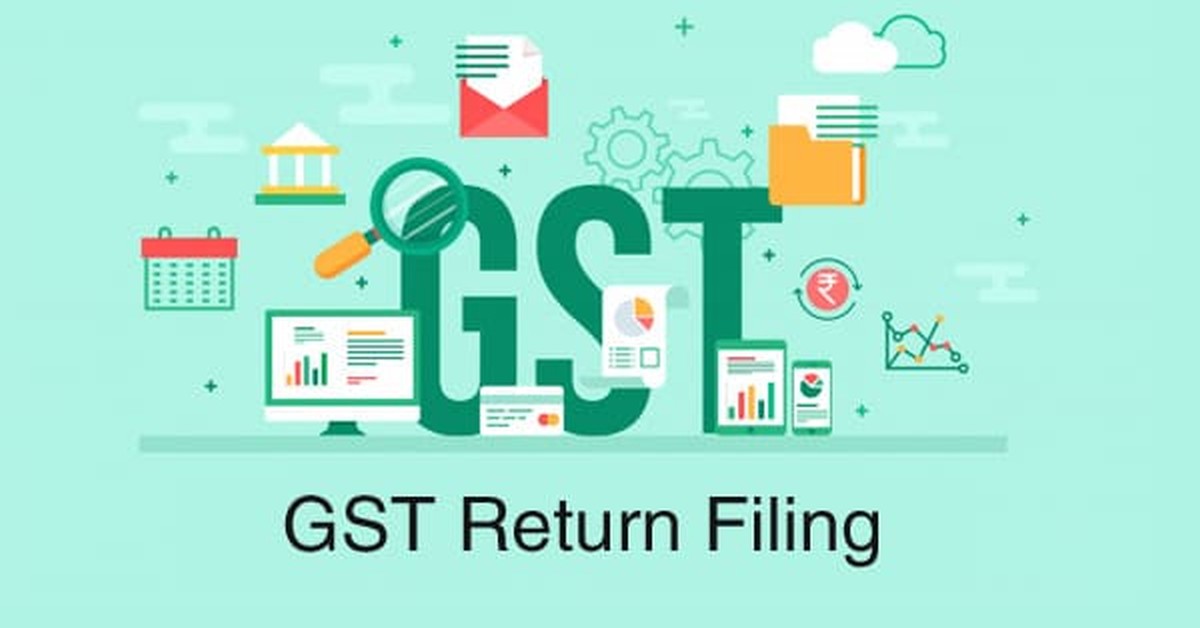The concept of returns under GST saw magnanimous launch 3 years ago in 2017 ---- fumbled all it’s way throughout and landed on a seemingly middle ground abridged version of return filing which was originally considered only as a makeshift mechanism and unfortunately become the only functional modus. Don’t get lost with all of this.
So back to basics. There are two types of returns under GST:
- One that you file (i.e.) you prepare the return on the basis of your sales your purchases your bills receivables and payables and you file the return.
- Second is the returns that get auto-drafted – commonly termed as “auto-populated”. You don’t prepare these returns. They get prepared by the system from the data of all taxpayers who have filed their returns. So everyone files their returns and these get auto-drafted. Fortunately or unfortunately of this kind – we don’t have many. There were supposed to be but aren’t any.
All in all there are 11 returns under GST: starting from GSTR-01 to GSTR-11. All these returns are not universally applicable to all tax payers. Some of them are applicable to everybody and some get triggered only if you are engaged in certain peculiar or typical transactions. WE will deal with them sequentially starting from GSTR-01.
- GSTR-01: GSTR-01 is a return of outward supplies. That’s a pure technicality. Let’s keep it aside. For a common man to understand this I would just say GSTR-01 is a return of sales. What you sold, to who sold when you sold, how much quantity you sold, where you sold, what value you sold, and what is the tax on it. So it’s entirely a reporting based return. Whatever has happened on your sales front in a given month – you have to show it in this GSTR-01 return. GSTR-01 is normally due on the 11th of next month. So the information of all sales made in a given month has to be disclosed to the government through this GSTR-01 return by 11th of next month.

However, for small tax payers with aggregate turnover of less than Rs. 1.5 crore instead of burdening them with monthly reporting requirement, the government has provided them the option to file this GSTR-01: quarterly instead of monthly.
All in all whether you are a big tax payer or a small tax payer you have to file GSTR-01 either monthly or quarterly. An important thing to be noted here is that you don’t pay any taxes through this GSTR-01. So it does not lead to any tax / cash outflow from you. This is only reporting / disclosure of your sales made. Even though it does not lead to any tax outflow, it is a significant return in the compliance table and it is important that this GSTR-01 is duly filed every month so that the rest of the process happens smoothly.
- The next in sequence is GSTR-2 & GSTR-3: These two non existent. They were launched but like how I said earlier – never really took off. Nothing came off it. They literally faced existential crisis and eventually phased out. So there is nothing to speak off this. So we will move on to GSTR-3B.
- GSTR-3B: Singularly the most crucial returns under GST. The moment I say crucial – you have to understand that this return attains its significance because it involves tax payment. So what I am telling is that this is a return that every registered person has to file. This return was originally introduced as a abridged return / temporary make shift return but has assumed unparalleled significance. And he has to file it because he has to pay the GST liability payment happens though filing this GSTR-3B. Every person who is registered under GST has to file this GSTR-3B so that he pays to the government the GST that he has collected from his customers. So if you delay filing the GSTR-3B it means that you are depriving the government from the money that is due to it. This GSTR-3B return is due on 20th of every month. So while you report the information of all sales made in a given month in GSTR-01 by 11th, the consequential tax payment is due on 20th.
- GSTR-4: Is a return to be filed by composition tax payers. I would not get into the details of this since it is an independent area of study in itself. However, I would say that for those small tax payers who have opted for composition scheme – GSTR-04 return is applicable. They do not have to file GSTR-01 / GSTR-3B. It is sufficient if they file GSTR-04 return. Originally, this GSTR-04 return was quarterly. So all composition tax payers filed GSTR-04 once in every three months for the first two years. From FY 2019-20 the compliance for composition scheme tax payers :as been further reduced and this GSTR-04 return is made annual. So composition tax payers file their GSTR-04 return now only once every year. However, since government has to get its GST collections, the tax payment has been simplified. So these composition tax payers even though filing their GSTR-04 returns annually have to pay their taxes every quarter through a challan in form CMP-08. So tax payment every quarter but return filing is annual.
- GSTR-05: This is a very rare return. To put it in lay man terms – “Not mainstream”. This return is to be filed by non-resident tax payers (i.e.) people who come into India temporarily to do business in India – this return is applicable to them. So these kind of tax payers are few and far between and this return is quite atypical.
- GSTR-06: The most confounding of all returns. Pretty mainstream but not applicable to everybody. So there is concept of input service distribution and credits on common input services received across various branches. For a layman I would say that this return is applicable if you have more than one GST registration. So through this GSTR-06 return – credits on common input services consumed by all your GST registrations has to be distributed. A little challenging for a layman to wrap your head around this concept so I will not confuse you further. Just remember that it gets triggered if you have more than one GST registration. Due to be filed every month by 13th.
- GSTR-07: Again – an uncommon return type – not applicable to everybody. Only to Government and government companies, government departments, PSUs etc. So through this return – GST TDS deductions made are paid to the government, GST TDS is yet again an independent area of study and understanding. So I will not go into those details. Due to be filed every month by 10th.
- GSTR-08: The next commonly uncommon return type – not applicable not everybody. But now that the nation is moving towards online business – e-commerce and all – there may a come a time when this GSTR-08 would attain the status of being mainstream. It is applicable only to e-commerce operators. So they pay the GST TCS collected on sales made through them to government through this return form. Again due on 10th of every month.
- GSTR-09: By far the most dreaded return in GST. Annual return to be filed by tax payers with turnover of more than 2 crores. I would say the nation is still getting used to it. It’s a long long long long long long return. Since it’s an annual return it has to be filed only once a year and its very very lengthy because we have to summarize all transactions for one whole year and report it here. So this return is quite a task.
- GSTR-10: Final return under GST – to those tax payers who surrender / cancel their GST registration – this final return has to be filed by them within 3 months of cancellation and bid bye bye to GST.
- GSTR-11: Return to be filed by persons holding UIN – an atypical of atypical returns. Very very very rare. So some boards, government, UN bodies etc get a unique identification number under GST instead of a regular GST registration number. So this return is applicable to be them.
So that is it about a basic understanding of different returns under GST. Like I said at the beginning of this video we have kept it quite simple and laymanish (if that exists). If you have come this far into the video kudos to your patience and attention and I sincerely hope that we were able to get through to you through our “BARE BASICS” series.
Very recently, Principal commissioner Mr. Yogendra Garg in a webinar by Assocham gave away that the government is working towards continuing the existing return mechanism under GST with slight modifications to ensure tax and credits check. So the much-hyped new returns of GST RET-1 Anx -01 which were expected to go live from October-2020 may not eventually see the light of the day.






 CAclubindia
CAclubindia


